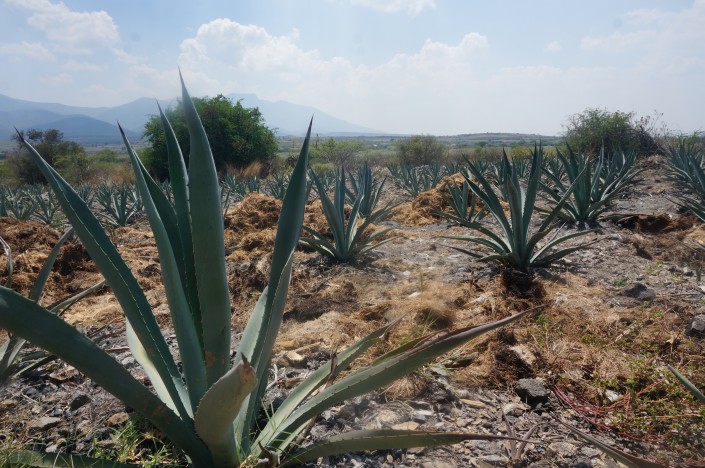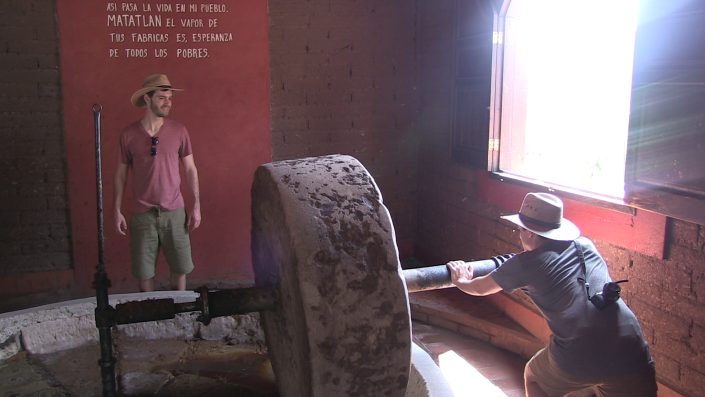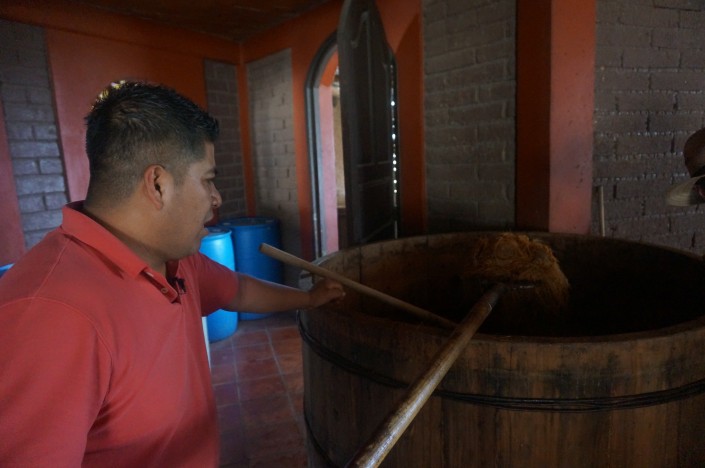So you want to make mezcal. Great! Let us know how it goes and invite us over when it’s ready!
Mezcal is the drink of Oaxaca and many would say Mexico. Like its cousin tequila, it’s made from the agave plant, but has a rich, smoky flavor. Mezcal is traditionally handcrafted by small-scale producers using family recipes that have been passed down for generations. The Global Goulets passed through the town of Matatlán, known as the mezcal capital of the world, and met with Armando, head of the Palenque Mal de Amor mezcal distillery, for a look at the process. We tried 9 (nine!) different types of Armando’s mezcal, and even ate some worms.
1) Okay – start by planting an agave field. It’ll take about 8-10 years before your agave are ready for harvesting, so put this article down for now and come back for Step 2 when you’re ready. But wait, you’re not off the hook just yet! When it rains, make sure to collect the gustanos de maguey (worms) that are growing on your plants, and bottle these up for later.

2) Hey, how are you? How have you been the last 8-10 years? Oh really? Yea, we’ve had that too. There are good doctors for that kind of thing.
3) Harvest your mature agave and cut off the plants’ leaves and roots to extract the piñas, or hearts. Toss them in your outdoor pit oven. Make sure it’s big – an 8-10 year old agave can weigh about 150 kilos. Armando’s oven holds 7 tons and is made from river rocks, mesquite (where the mezcal gets its deeply smoky flavor), and eucalyptus.
4) After 4-5 days of cooking, the agave meat is fibrous and overwhelmingly sweet – it is jam packed with sugar. Bring the agave meat inside to the smasher and have your horse (oh, you’ll need a horse) pull a massive rock wheel in a circle over the meat until you’ve pulped it into fiber and juice.

5) Collect the agave fiber in a big open barrel. Mix the fiber with warm water for the sugar to start fermenting. After about 2 days, add cold water and start mixing the fiber and water together by hand. This can take some effort – Armando’s barrel holds 850 kilos of fiber.
6) After 6 or 7 days, you’ll have a big bucket of mud – but we’re almost there! It’s already highly alcoholic mud.

7) Distill your fiber and juice. Put it in a fire and collect the steam. Cool off the steam and collect the droplets of condensed liquid.
8) Distill once more! This is where you can have some fun – toss fruit, or even hang an uncooked pechuga (chicken) in the oven to enhance the flavor.

9) You didn’t forget to collect those worms, did you? How many did you collect over the years? Pan fry those gustanos de maguey with some salt and toss them in the bottle for even more flavor.

10) Have kids, and grandkids. Your recipe may be carried on for generations. Armando and his brother are the third generation of his family to run the business. What makes good mezcal great? The agave plant and the hands that make it, Armando claims.
Let us know when it’s ready.
Salud,
The Global Goulets



I <3 worms
Pingback: Dispatch 8: One-of-a-kind Oaxaca - #GlobalGoulets